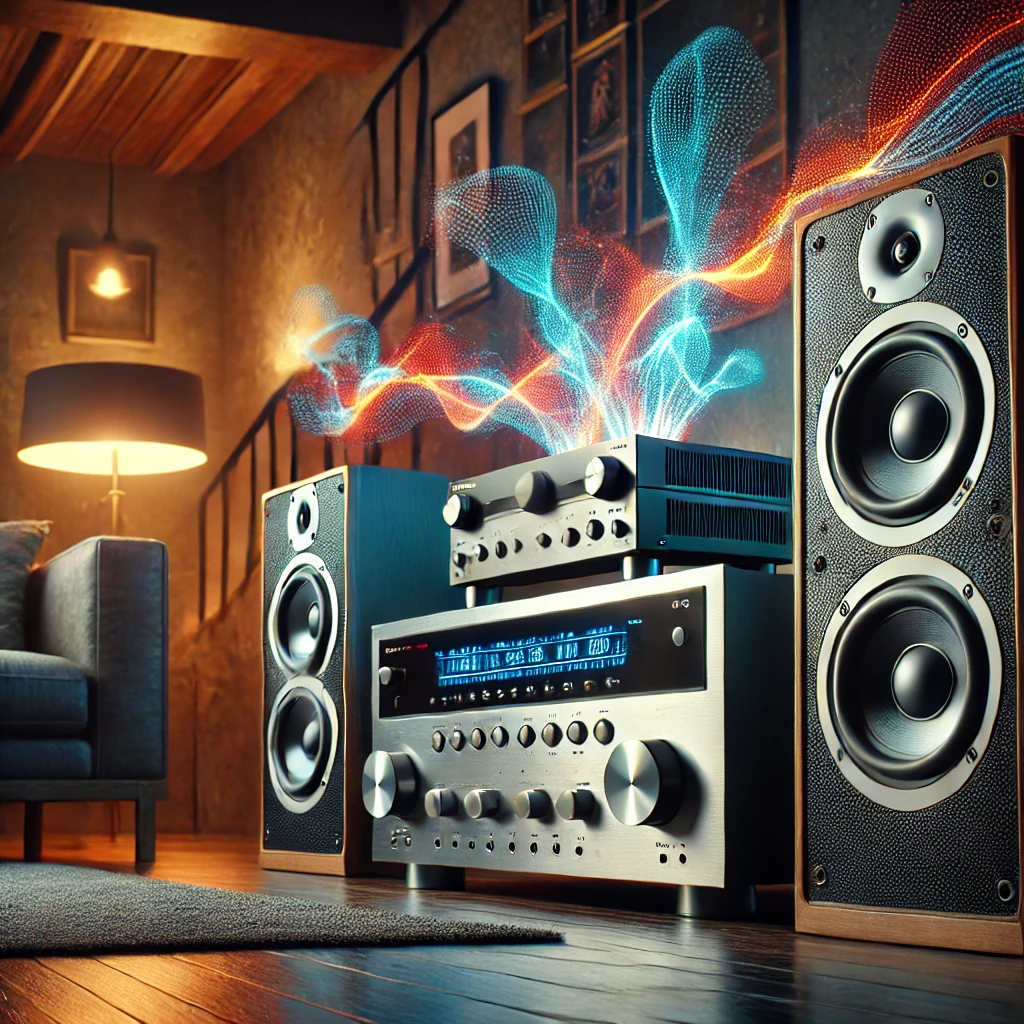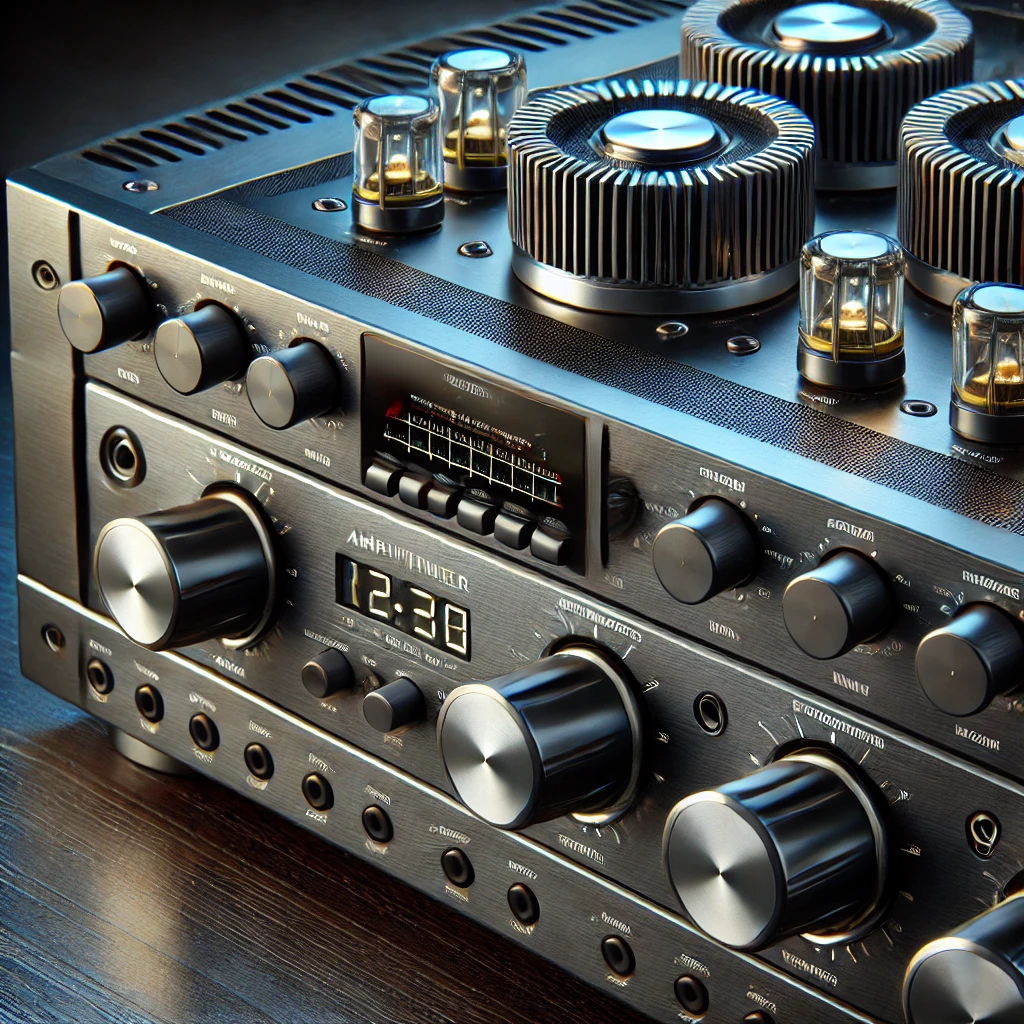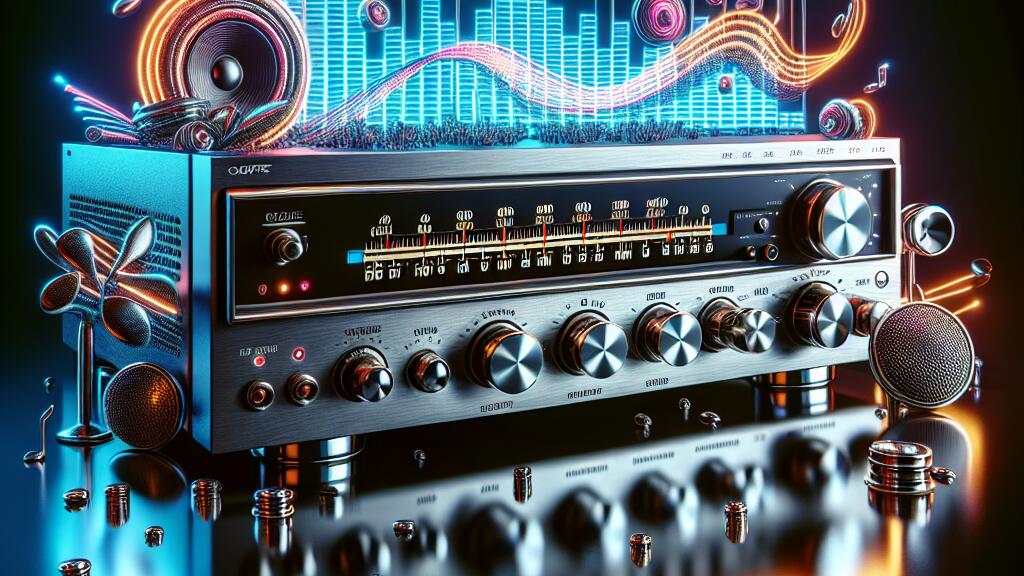Table Of Contents
Understanding the Importance of Amplification in Stereo Receivers
Key Takeaways
- Comprehending audio devices designed for dual-channel sound
- Significance of power enhancement in audio equipment
- Investigating sound boosting units
- Advantages of superior sound enhancement
- Impact of amplification on auditory enjoyment
Understanding Stereo Receivers
Stereo receivers serve as the central hub for any home stereo system, seamlessly integrating various components to deliver vibrant stereo sound. At the heart of these receivers is the audio amplifier, which significantly influences overall audio performance. Understanding The Importance of Amplification in Stereo Receivers emphasizes how quality amplification can enhance the listening experience by providing clarity and detail, making the most of stereo speakers. For optimal sound reproduction, users must consider different types of audio amplifiers, including transistor amplifiers, which can greatly affect the efficiency and power delivery of their stereo systems. Ultimately, selecting the right stereo receiver, coupled with appropriate amplification, ensures a compelling audio experience in any home stereo setup.

Key Components of Stereo Receivers
A stereo receiver typically consists of several key components that work together to deliver an optimal audio experience. At the heart of this system is the amplifier, which can come in various forms such as class A amplifiers, class B amplifiers, and integrated amplifiers. The importance of amplification in stereo receivers cannot be overstated, as it directly influences the amplification of audio signals from sources like digital amplifiers and tube amplifiers. Whether utilizing an audio power amplifier or RF amplifiers, each type plays a crucial role in determining the quality and clarity of sound reproduction.
Another essential component is the tuner, which allows users to access radio frequencies and streaming services. The interaction between these components, especially the amplifiers, shapes the overall soundstage and listening experience. Tube amplifiers may offer a warm sound character, while modern digital amplifiers can provide efficiency and precision. Understanding these components and their functions is vital for anyone looking to enhance their audio setup. The importance of amplification in stereo receivers highlights the need for high-quality equipment to achieve the best performance possible.
Role of Amplification in Sound Quality
Amplification serves as a critical component in the realm of audio electronics, significantly influencing sound quality. The importance of amplification in stereo receivers cannot be overstated, as it determines how well an audio signal is processed and delivered. High-end audio systems often utilize power amplifiers and class D amplifiers to maximize sound fidelity. These systems rely on output transistors, which play a pivotal role in managing the flow of power, thereby ensuring a clear and dynamic audio experience. The right amplification setup helps to effectively amplify low-level signals, bringing out the nuances in music that listeners crave.
The choice between different types of amplifiers can greatly affect the overall performance of a stereo setup. Class D amplifiers, known for their efficiency, can deliver substantial power without the heat produced by linear amplifiers. However, the selection of a power amplifier must align with the specifications of the speakers to achieve optimal performance. Underpowered or overpowered amps can lead to distortion or, conversely, insufficient audio output. Understanding the interaction between receivers and the amplifying components is essential for anyone seeking a rich and immersive listening experience.
The Importance of Amplification in Stereo Receivers
Amplification plays a crucial role in the overall performance of audio equipment, establishing itself as a cornerstone of high-fidelity sound. The importance of amplification in stereo receivers cannot be overstated, as it directly influences audio power and clarity. Linear amplifiers and class AB amplifiers deliver warmth and detail in sound reproduction, while class D amplifiers provide efficiency without sacrificing quality. New stereo receivers increasingly integrate advanced amplification technologies, enhancing digital audio playback. Users should consider the specific needs of their audio system, ensuring that the chosen stereo amp complements the speakers for optimal performance. Understanding the importance of amplification in stereo receivers guides enthusiasts in selecting the right stereo amplifiers for their listening experience.
Enhancing Audio Performance
Quality stereo music relies heavily on the ability of equipment to deliver a clear and immersive listening experience. The Importance of Amplification in Stereo Receivers cannot be understated, as a well-designed amplifier will effectively amplify the audio signal from the player. A good stereo p.a system ensures that the stereo sound maintains its integrity, delivering a rich soundstage with excellent stereo separation. Whether you’re using a mini stereo system or a classic stereo setup, the right amplifier will enhance the depth and detail of your audio.
High-performance amplifiers, such as 20-w stereo class models, play a crucial role in maximizing sound quality. By providing typical amplifier outputs, these devices can significantly improve the overall listening experience. Home stereo systems benefit from this amplification, producing dynamic and engaging audio that captivates the listener. Whether tuning into an FM/DAB+ stereo receiver or enjoying vinyl through art audio amps, the right amplification transforms your listening space into a vibrant audio venue.
Impact on Speaker Efficiency
Speaker efficiency heavily relies on the amplifier type used in the audio system. A good amplifier can significantly boost the performance of speakers, making them more capable of delivering sound at higher volumes without distortion. Both conventional transistor amplifiers and solid state stereo units contribute to this efficiency by providing adequate power and stable output. The importance of amplification in stereo receivers becomes evident as an integrated audio amplifier or external amplifier enhances the sound produced by a stereo head unit. This amplification ensures that even moderate-power stereo setups can achieve remarkable sound quality.
Different amplifier implementations affect how speakers perform in various audio environments. A mini amplifier may suit smaller setups while a robust external amplifier can power larger, more demanding speakers efficiently. Understanding amplifier specifications helps users make informed choices regarding amplifier design that matches their speakers. Choices between stereo amplifiers and integrated units highlight the significance of an appropriate amplifier system in achieving optimal speaker efficiency. The importance of amplification in stereo receivers is paramount for any audio enthusiast seeking to elevate their listening experience.
- Increased sound clarity and detail with the right amplifier
- Enhanced dynamic range for a more immersive audio experience
- Reduction in distortion at higher volumes
- Better overall performance in both small and large audio setups
- Improved compatibility between speakers and amplifiers
- Maximized power delivery leading to more impactful sound
- Greater flexibility in audio system design and configuration
Exploring Stereo Amplifiers
Stereo amplifiers are essential components for achieving optimal sound quality in audio systems. The importance of amplification in stereo receivers cannot be overstated, as it directly influences the performance of various speakers. Different amp configurations, such as conventional amplifiers and modern amps, cater to distinct audio needs. A home cinema amplifier, for instance, may focus on delivering immersive surround sound, while a two-channel amplifier is designed for stereo playback. Understanding amplifier output stages helps consumers choose the right amplifier products that match their preferences. Selecting a particular amp requires considering how the different amps blend with existing equipment, ensuring a seamless audio experience. Ultimately, the right new amplifier can significantly enhance the overall listening experience, proving that the selection of an amp plays a crucial role in audio fidelity.
Types of Stereo Amplifiers
Several types of stereo amplifiers are prevalent in the audio market today. Good amps vary significantly in design and functionality, ranging from integrated amplifiers to dedicated power amplifiers, each serving unique purposes in a stereo chassis. The amplifier works as a power source for the entire sound system, magnifying audio signals to ensure precise amplification. While some may opt for a mediocre audio amplifier, audiophiles often seek high-quality music playback from amps that can manage higher amplifier power output and maintain consistent amplifier currents.
Understanding the different amp channels is essential for selecting the right amplifier. Yes amps can come with various configurations, including stereo, mono, or multi-channel setups, allowing listeners to tailor their audio experience. The importance of amplification in stereo receivers cannot be overstated, as the right choice can enhance any listening environment. Amplifiers today not only improve overall sound quality but also play a vital role in achieving optimal speaker performance and dynamics.
- Integrated amplifiers combine a preamp and power amp in one unit, making them space-efficient.
- Power amplifiers are designed solely to amplify audio signals, providing greater power to drive speakers.
- Tube amplifiers are known for their warm sound and are favored by some audiophiles for their unique tonal characteristics.
- Class D amplifiers are highly efficient and compact, making them popular for both home and portable audio solutions.
- Multi-channel amplifiers support surround sound systems, ideal for home theater setups.
- Digital amplifiers use digital signals for processing audio, which can improve clarity and reduce distortion.
- Hybrid amplifiers combine features of both tube and solid-state designs, aiming to offer the best of both worlds.
Features to Consider When Choosing a Stereo Amp
Choosing the right stereo amp involves evaluating several essential features. The importance of amplification in stereo receivers cannot be overstated, as it directly affects audio quality. Look for models that offer higher-quality amplifiers, as these can significantly reduce the amplifier noise floor and enhance overall sound clarity. Stereophile uses various criteria to assess performance, including output transistor size, which influences the amp’s efficiency and sound reproduction capabilities. It’s also vital to consider whether the amplifier supports surround sound formats, especially if you plan to use multiple amplifiers in your audio setup.
Another critical aspect to consider is the type of amplification module used, as it contributes to the consistency of directional sound in your system. High-end amplifiers often provide better performance and durability, ensuring a more engaging listening experience. If you’re looking for versatility, a 4-channel amplifier can be an excellent choice, allowing compatibility with various audio devices in an amp combo configuration. Ultimately, understanding these key features will help you make an informed decision when investing in your audio equipment, highlighting the importance of amplification in stereo receivers.
Benefits of HighQuality Amplification
High-quality amplification is crucial for achieving superior audio performance, particularly when utilizing various audio sources like digital audio sources. The importance of amplification in stereo receivers cannot be overstated, as it directly impacts the clarity and richness of music playback. Typical A/V receivers often feature integrated-circuit amplifier implementations that may not deliver the same fidelity as separate amplifiers or the more robust CXA series amplifiers. Self-oscillating amplifiers and linear-amplifier output stages employ output transistors effectively, providing enhanced power management and stability. Properly matched output-stage transistors can significantly improve the dynamic range and headroom of a system, allowing listeners to experience the full depth of their favorite tracks without distortion, showcasing the true benefits of high-quality amplification.
Clarity and Detail in Audio Reproduction
The importance of amplification in stereo receivers cannot be understated. A new amp can significantly reduce sound distortion, enhancing the overall sound accuracy of an audio device. High-quality amplifiers utilize advanced technology, such as filterless amplifiers, which help provide cleaner power to speakers. This leads to a wide soundstage, allowing listeners to experience audio in a more immersive manner. For those investing in their own amp, understanding how transistor size affects performance is crucial, as it can impact clarity in various audio applications.
Listeners seeking improved clarity and detail in their audio reproduction should prioritize selecting an amp that matches their speakers’ needs. A well-matched system can yield louder sound without compromising quality. Audio research references indicate that first amplifiers often lack the headroom necessary for dynamic range. As a result, opting for the right amplification can significantly influence how an audio source is perceived, ultimately enriching the listening experience.
| Amplifier Type | Technology | Sound Quality | Recommended Speaker Matching |
|---|---|---|---|
| Class A | Linear, low distortion | Excellent clarity, warm sound | High sensitivity speakers |
| Class D | Efficient, compact design | Good detail, powerful output | Wide range of speakers |
| Tube Amplifier | Analog warmth, rich harmonics | Soft and natural sound | High-impedance speakers |
| Integrated Amplifier | Combines pre-amp and power amp | Convenient, versatile | Mid-range speakers |
Improving Dynamic Range and Headroom
Dynamic range refers to the difference between the softest and loudest sounds in audio playback. The importance of amplification in stereo receivers plays a crucial role here; a dedicated amp with large transistors can provide the necessary voltage amplification to enhance this range. Quality music reproduction requires a robust audio setup that maximizes audio performance, enabling listeners to experience the full spectrum of sound output. Feedback amps can help achieve this by ensuring that the amplification remains consistent, allowing for an immersive listening experience.
Headroom is equally vital in preventing distortion and maintaining audio quality at higher volumes. Cheap amplifiers may fall short in this regard, limiting the overall impact and clarity of the musical signal. Investing in a price amplifier that offers sufficient headroom can significantly improve dynamic range, enriching both subtle tones and powerful crescendos. Audio research consistently shows that the right amplification improves not only sound output but also the enjoyment of music, making it essential for true audio enthusiasts.
How Amplification Affects Listening Experience
The listening experience is significantly influenced by amplifier power and speaker compatibility, emphasizing The Importance of Amplification in Stereo Receivers. Audiophiles often seek separate amps to achieve optimal performance, particularly when using high-quality speakers that demand precise audio input. Matching amplifier output with impedance speakers ensures efficient energy transfer, enhancing overall sound reproduction. For audio enthusiasts, a well-matched setup allows for deeper exploration of the audio spectrum, revealing details that lower-quality systems may miss. Investing in sound tech that offers enough audio channels can elevate the listening experience, particularly in spaces with unique room acoustics. High-quality sound reproduction not only satisfies the audiophile standards but also transforms everyday audio sources into captivating auditory experiences.

Matching Amplifier Power to Speakers
Matching the amplifier power to speakers is crucial for achieving optimal playback quality. The importance of amplification in stereo receivers cannot be overstated, particularly when dealing with low impedance speakers. An inferior amp may struggle to adequately drive these speakers, resulting in distortion and a diminished signal-to-noise ratio. The ability to handle audio amplitude within the appropriate audio frequency band is essential to ensure clear and dynamic sound reproduction. Closed-loop amplifiers and state amps can enhance performance, but they must be properly matched to the speaker’s specifications to be effective.
A proper match also influences how well the high-side transistor and low-side transistor operate in audio systems. Sony and Pioneer amps are often designed with these considerations in mind, making them reliable choices for both home audio setups and commercial sound systems. Recordings can sound vastly different based on the amplifier’s capability to deliver the required power without introducing distortion. Ensuring that amp import aligns with speaker requirements maximizes the listening experience and maintains the integrity of the original sound.
Conclusion
The Importance of Amplification in Stereo Receivers cannot be overstated for anyone passionate about achieving superior sound quality. Amplification serves as the backbone of an entire audio system, ensuring that the nuances of music are faithfully reproduced. The use of dual-amplifier ICs has become prevalent in the audio industry, allowing for enhanced performance and clarity. By choosing the right amplifier, listeners can unlock the full potential of their speakers and elevate their listening experience to new heights. Ultimately, understanding and appreciating amplification plays a crucial role in shaping the quality of audio enjoyed by enthusiasts across the board.
FAQS
How does the output transistor in home stereos impact the amplification stages for improved sound quality?
The output transistors in home stereos play a crucial role in the amplification stages, as they help an amplifier serve its purpose effectively by magnifying the stereo signal. This, in turn, enhances the stereo sound/soundstage, which is essential for high-end audio performance. Additionally, when using commercial sound systems and quality amps focusing on output transistors, you can expect an improvement in audio frequency band—and overall listening experience, especially with FM/AM stereo receivers and class-D amplifiers.
How does an amplifier improve sound quality in high-end audio systems?
An amplifier serves as a crucial component in high-end audio setups because it magnifies the audio signal, ensuring that your speakers receive ample power for optimal sound performance. Just like any factory amplifier, a well-designed amplifier does improve sound quality significantly, especially when matched properly with speakers or room acoustics. Using the same amp for different setups may yield varying results, whether you’re working with box speakers or commercial sound systems—and brands like Sony and Pioneer amps are particularly noted for their performance in these scenarios.
How does using high-end audio components in a stereo system affect overall sound performance?
In high-end audio systems, the quality of components plays a significant role in sound performance. An amplifier does improve sound quality by driving the speakers more effectively, as an amplifier magnifies the audio signals. For optimal results, an amp needs to work well with the speakers and consider room acoustics, such as those offered by brands like Sony and Pioneer amps.
How does room acoustics influence the performance of high-end audio systems paired with amplifiers?
Room acoustics play a crucial role in the overall sound performance of high-end audio systems. When using just high-end amplifiers and speakers, the interaction between the sound waves and the room’s surfaces can either enhance or detract from the listening experience. For optimal results, brands such as Sony and Pioneer provide amplifiers designed to work effectively with various speaker setups and room acoustics, ensuring that the sound quality remains exceptional no matter the environment.
How do amplifiers affect high-end audio systems when paired with speakers and room acoustic considerations?
In high-end audio systems, just focusing on amplifiers is crucial, as they play a significant role in driving speakers effectively. The choice of amplifiers, such as those from Sony or Pioneer, can greatly enhance sound performance by optimizing the interaction with room acoustics, ensuring that the audio experience is as immersive and high-quality as possible.
How can the choice of amplifiers and speakers impact the quality of sound in high-end audio systems, especially regarding room acoustics?
In high-end audio systems, the selection of just the right amplifiers and speakers significantly influences sound quality. Brands like Sony and Pioneer amps are renowned for their capabilities in enhancing audio performance. Additionally, the room acoustic environment plays a crucial role in how well these amplifiers and speakers interact to deliver an optimal listening experience.
What role do amplifiers play in achieving optimal sound quality in high-end audio systems when considering speakers and room acoustic dynamics?
Amplifiers are crucial in high-end audio as they enhance sound quality by effectively driving speakers while also accounting for room acoustic factors. Brands like Sony and Pioneer amps are known for their ability to integrate seamlessly with speakers to produce an elevated listening experience, showcasing just how essential amplifiers are in optimizing overall high end audio performance.
What are the benefits of using just amplifiers from brands like Sony or Pioneer in conjunction with speakers and room acoustic optimization?
Using just amplifiers from trusted brands such as Sony or Pioneer can significantly enhance the quality of sound in your audio setup. These amplifiers are designed to work seamlessly with various speakers while considering room acoustic dynamics, ensuring optimal performance and clarity in sound reproduction.
What are the advantages of using just amplifiers from well-known brands like Sony or Pioneer when setting up a stereo system, and how do they interact with speakers and room acoustic factors?
Using just amplifiers from brands like Sony or Pioneer can enhance the overall audio experience in a stereo system. These amplifiers are designed to work seamlessly with speakers and adapt well to room acoustic conditions, ensuring that the sound quality is optimized regardless of the environment. This synergy between just amplifiers, speakers, and room acoustic considerations leads to a more immersive listening experience.
What are the key factors to consider when selecting just amplifiers for a stereo system with speakers and room acoustic optimization, especially if opting for Sony or Pioneer amps?
When selecting just amplifiers for your stereo system, particularly Sony or Pioneer amps, it’s important to consider their compatibility with your speakers and the room acoustic dynamics. High-quality amplifiers can significantly enhance sound reproduction, but their true potential is realized when they are matched well with appropriate speakers and when room acoustic factors are taken into account. By optimizing these elements, you can achieve a superior audio experience.

